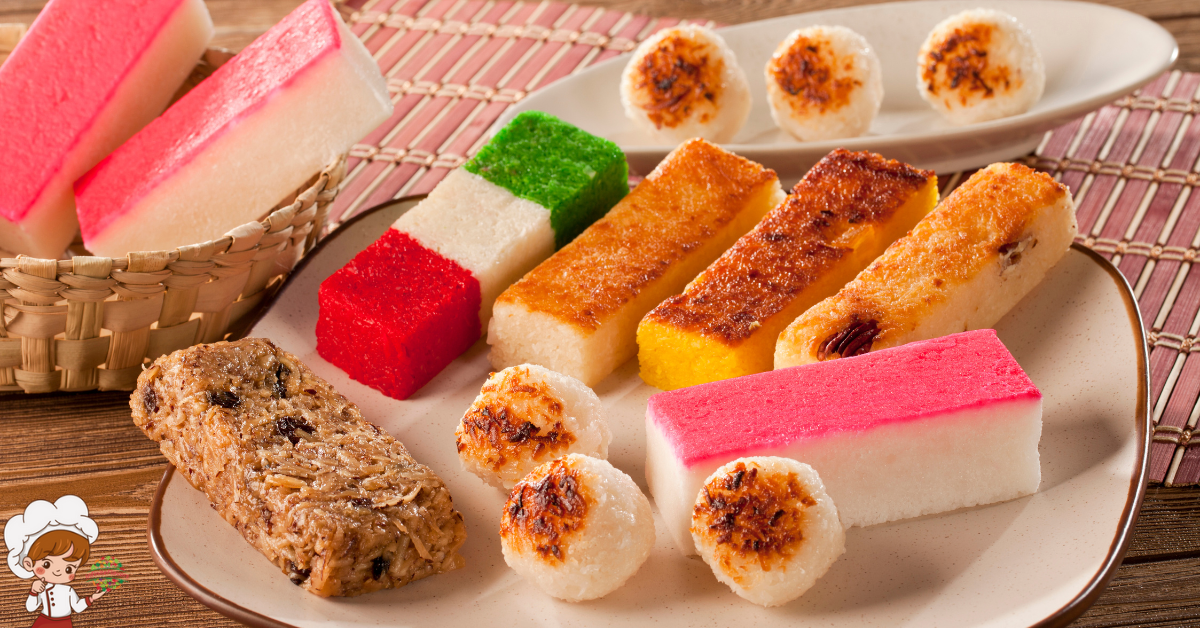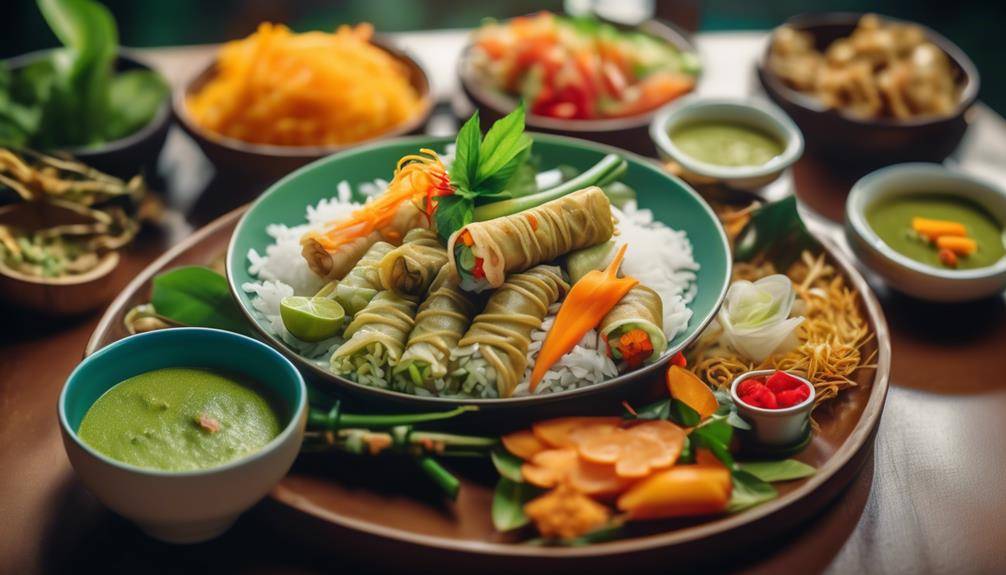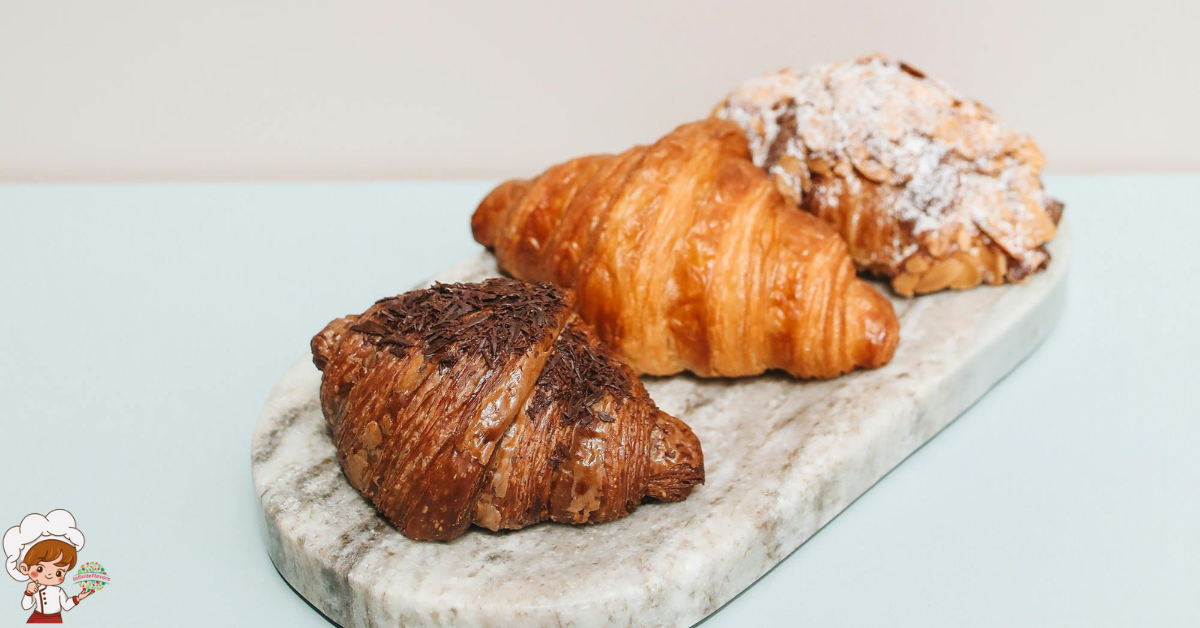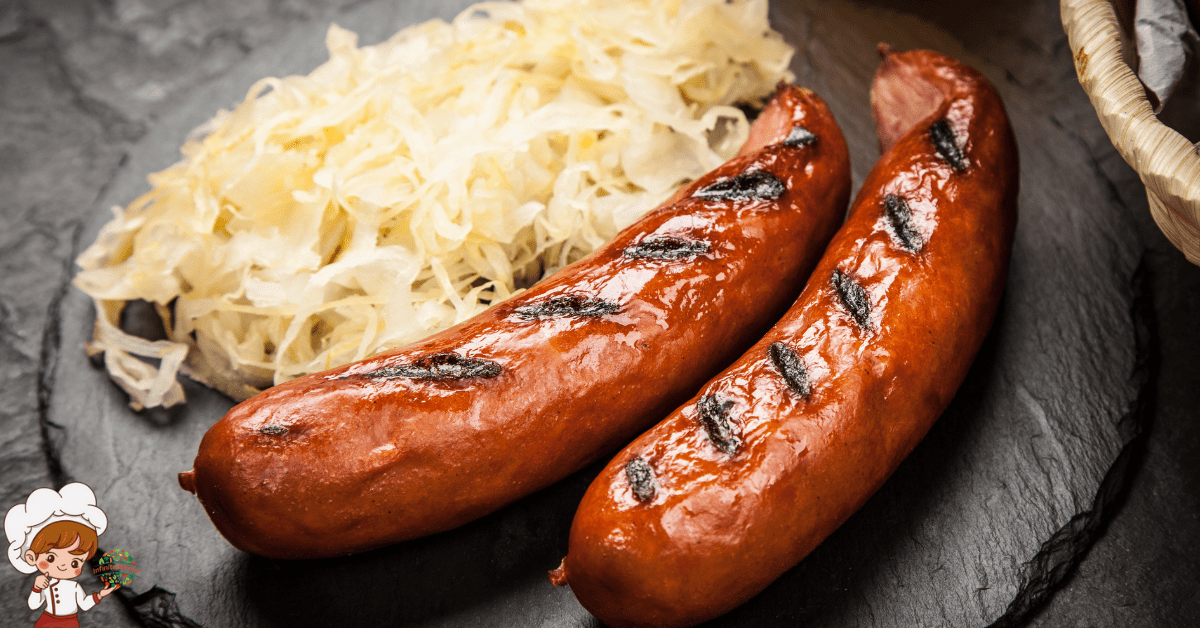Important Safety Precautions When Flambéing

Important Safety Precautions When Flambéing; When flambéing, your safety comes first. Always use high-proof alcohol for easy ignition and avoid low-proof options. Keep flammable items, like paper towels, well away from your cooking area. Use long-handled lighters and heavy-duty, heat-resistant pans to control flames effectively. Wear heat-resistant gloves and an apron, and keep a fire extinguisher nearby. Make certain your workspace is clear of clutter and that smoke detectors are functional. Finally, familiarize yourself with emergency protocols in case things go wrong. By following these precautions, you can guarantee a safe and exciting flambé experience while exploring more techniques and tips.
Understanding Flambéing Basics
Flambéing is a cooking technique that often adds excitement and flavor to dishes, and you might encounter it more frequently in upscale restaurants or during special occasions. This method involves igniting alcohol in a dish to create a dramatic flame, which not only enhances the presentation but also intensifies the flavors. Understanding the basics of flambéing is vital if you’re considering trying it at home.
To start, you’ll need to select an appropriate alcohol, typically something with a higher proof, like brandy or rum. The key is to guarantee the liquid ignites easily without overwhelming the dish. When applying flambé techniques, always remember to pour the alcohol away from the flame and only add it once the pan is off the heat. This helps prevent any accidental flare-ups.
Flame control is essential when flambéing. You want to achieve a controlled flame that enhances your dish without causing chaos in your kitchen. Once you’ve added the alcohol, carefully tip the pan to ignite it or use a long lighter to avoid getting too close. Always stand back, as the flames can rise quickly.
Keep a lid nearby to smother any flames if needed, and guarantee your cooking area is clear of flammable materials. With practice, you’ll find that mastering flambéing can transform your cooking, impressing friends and family with both technique and taste. Just remember to prioritize safety while enjoying this exciting culinary art!
Choosing the Right Ingredients
When you’re flambéing, the ingredients you choose can make all the difference. Select high-quality alcohol with a suitable proof, and don’t underestimate the importance of fresh ingredients for the best flavor. Consider how the flavors of your ingredients pair together to create a delicious dish that shines.
Alcohol Selection Tips
Choosing the right alcohol is essential for a successful flambé. The alcohol you select affects both the flavor and the flame intensity of your dish. Generally, you’ll want to choose spirits with a higher alcohol content—around 40% (80 proof) or more—to achieve a robust and controllable flame.
Common alcohol types used for flambéing include rum, brandy, and whiskey. Each of these not only contributes unique flavors but also ignites well, creating that impressive burst of flames you’re after. Avoid using low-proof alcohol, as it might not ignite properly or create the desired dramatic effect.
When selecting your alcohol, consider the dish you’re preparing. A rich brandy complements savory meats, while a fruity rum works beautifully with desserts. You should also think about how the alcohol’s flavor profile interacts with other ingredients.
Fresh Ingredient Importance
Using fresh ingredients is vital for creating a memorable flambé dish. When you choose fresh produce, meats, and herbs, you not only enhance the flavors but also guarantee a better texture and presentation. Ingredient freshness plays an important role in achieving that vibrant taste explosion that defines flambé cooking.
Make it a habit to source your ingredients based on seasonal availability. Seasonal ingredients are often at their peak flavor and nutrient content, making your dish stand out even more. For instance, using ripe tomatoes in summer or fresh herbs in spring can elevate your flambé to new heights.
Don’t underestimate the impact of freshness on the overall experience. Ingredients that are past their prime can dull the flavors and compromise the dish’s quality, leading to a less satisfying meal.
Before you start flambéing, take a moment to inspect your ingredients. Look for vibrant colors, firm textures, and pleasant aromas. By prioritizing fresh ingredients and seasonal options, you’ll set the stage for a fantastic flambé that impresses your guests and keeps them coming back for more.
Flavor Pairing Considerations
Flavor pairings can elevate your flambé dishes in remarkable ways. When you choose the right ingredients, you set the stage for a culinary masterpiece. Think about how sweet contrasts can enhance the overall flavor profile. For instance, pairing fruits like peaches or pineapples with meats creates a delightful balance that makes your dish unforgettable. The sweetness of the fruit complements the savory accents of the meat, resulting in a harmonious blend.
Don’t overlook the power of herbs and spices, either. Fresh herbs like rosemary or thyme can add depth to your flambé, bringing out the natural flavors of your ingredients. You might also consider using spirits that match your primary ingredient; for example, a splash of brandy goes wonderfully with duck or chicken.
Experiment with sauces as well. A rich, savory sauce can provide a beautiful backdrop for the flambé process, enhancing the flavors and adding an appealing visual element. Remember, balancing sweet contrasts with savory accents is key. By thoughtfully selecting your ingredients, you’ll create dishes that not only taste amazing but also impress your guests. Happy flambéing!
Selecting Appropriate Cookware
The right cookware can make all the difference when flambéing, guaranteeing both safety and effective cooking. To start, you’ll want to choose cookware made from materials that can withstand high temperatures without warping or breaking. Stainless steel and cast iron are excellent choices due to their exceptional heat resistance and ability to distribute heat evenly. Avoid using non-stick pans, as the coatings can release harmful fumes when exposed to high heat.
Next, consider the size and shape of your cookware. A wide, shallow pan allows for better evaporation of alcohol, which leads to a more dramatic flame when you flambé. On the other hand, deep or narrow pans might trap the flames, making it harder to control the fire. A sauté pan or skillet is typically your best bet.
Additionally, verify that your cookware has sturdy handles. This is essential for safely maneuvering the pan while flambéing. If the handle’s made from a heat-sensitive material, it could become too hot to touch. Look for cookware with heat-resistant silicone or metal handles for ideal safety.
Lastly, check for any loose parts or damage before you start. Cookware that’s in good condition helps prevent accidents. By selecting high-quality, heat-resistant cookware, you’re setting yourself up for successful and safe flambéing. Keep these tips in mind, and you’ll be able to enjoy the thrilling experience of flambéing without compromising on safety.
Preparing Your Cooking Area
Before you start flambéing, it is vital to prepare your cooking area properly. First, verify your kitchen layout is conducive to this cooking technique. Clear your countertops of any clutter, as you’ll need ample space to work safely. Keep a safe distance between your cooking station and any flammable materials, like dish towels or paper products. This is important for fire safety.
Next, gather all the ingredients and tools you’ll need within arm’s reach. This includes your flambé pan, utensils, and any garnishes. By having everything close by, you minimize the risk of leaving your cooking area unattended, which can lead to accidents.
Make certain your stovetop is clean and free from grease or spills that could ignite unexpectedly. If necessary, wipe down surfaces with a damp cloth to confirm there’s no residue left behind. Also, check that your smoke detectors are functioning correctly. They should be in working order to alert you in case of any unforeseen incidents.
Managing Open Flames
When handling open flames during flambéing, safety must be your top priority. To guarantee flame safety, always keep a fire extinguisher nearby, easily accessible in case of an emergency. Familiarize yourself with its operation before you start cooking. Make sure your cooking area is free of unnecessary heat sources and flammable materials that could exacerbate cooking hazards.
Wearing appropriate safety gear, such as heat-resistant gloves and an apron, can help protect you from burns and splatters. Consider the importance of kitchen ventilation; ascertain that your space is well-ventilated to prevent smoke build-up and the risk of fire. If your kitchen has emergency exits, keep them clear so you can quickly exit if needed.
Before you begin flambéing, check your fire insurance policy to confirm you’re covered for any potential incidents. Knowing you have that safety net can give you peace of mind while cooking.
As you manage the open flames, watch the flame’s intensity and adjust your heat source accordingly. If the flames become too large or uncontrolled, don’t hesitate to extinguish them using the fire extinguisher. Remember, your safety comes first, and no dish is worth risking an injury or fire.
Using Proper Techniques
When you’re flambéing, it’s essential to choose safe materials that can withstand high heat. You also need to control the flame height to prevent any accidents. Mastering these techniques will guarantee a safer and more enjoyable cooking experience.
Choose Safe Materials
Choosing safe materials is essential for a successful flambé. Start by selecting alcohol with a high proof, like brandy or rum, as it ignites easily and burns off quickly. Avoid using lower proof spirits, as they might not ignite properly or could produce excessive flame. Always opt for safe materials that won’t create hazardous fumes or unwanted reactions when exposed to flame.
You’ll also want to use fire-resistant tools while flambéing. A long-handled lighter or a long match guarantees you can safely ignite the alcohol without getting too close to the flame. Consider using a heavy-duty pan that can withstand high temperatures without warping. Non-stick pans can release harmful chemicals when heated too high, so stick with stainless steel or cast iron.
Additionally, keep flammable items, like paper towels or dishcloths, away from your cooking area. This precaution helps minimize the risk of an accidental fire. When you choose safe materials and fire-resistant tools, you’re not just enhancing your cooking experience; you’re also prioritizing safety. Remember, a well-planned flambé can be both delicious and drama-free when you take the right precautions!
Control Flame Height
Maintaining control over flame height is essential for a successful flambé. If you don’t manage the flame properly, it can lead to dangerous situations or ruin your dish. Start by using a long-handled lighter to ignite the alcohol safely, keeping your hand away from the flame. This distance helps with flame control, reducing the risk of burns.
To adjust the height of the flame, you can use the type and amount of alcohol you pour. A higher alcohol content will create a taller flame, while a lower content will keep it lower. When pouring, do it slowly and steadily; this allows for better height adjustment and minimizes flare-ups.
Always keep a lid or a fire extinguisher nearby in case you need to control an unexpected fire. If the flame gets too high, you can extinguish it by covering the pan with a lid to deprive it of oxygen. Remember, your goal is to create a beautiful, controlled blaze that enhances your dish, not to endanger yourself or your kitchen. With practice and caution, you’ll master the art of flambéing safely and effectively.
Emergency Preparedness
Being prepared for emergencies while flambéing can make all the difference in guaranteeing a safe cooking experience. You should always have a plan in place before you ignite that flame. Begin by familiarizing yourself with fire extinguisher training. Knowing how to use a fire extinguisher effectively can prevent small flare-ups from turning into major disasters. Practice using it beforehand, so you feel confident when the moment arises.
Next, create an emergency contact list that includes local fire departments, poison control, and any other important numbers you might need. Keep this list displayed prominently in your kitchen, perhaps on your refrigerator or a bulletin board. That way, you won’t waste precious time searching for numbers in an emergency.
Additionally, make sure your kitchen is equipped with a working smoke detector and a fire blanket. These tools can be invaluable in managing unexpected situations. Before you start flambéing, check your surroundings. Confirm there are no flammable materials nearby, and clear the area of any clutter that could exacerbate a fire.
Cleaning Up Safely
After a flambé session, it’s important to clean up safely to prevent accidents later on. Begin by ensuring all flames are completely extinguished and the area is cool to the touch. This step is vital; even a small ember can ignite residual alcohol or grease.
Gather your cleaning supplies, making sure you have everything you need at hand. You’ll want to use non-flammable cleaners that won’t pose a fire hazard. Start by wiping down the cooking surface with a damp cloth to remove any food particles or grease. If you used a pan that caught fire, let it cool before handling it, and clean it with a suitable scrubber.
Next, pay special attention to any items that contained flammable liquids. For proper disposal, never pour leftover alcohol down the drain or in regular trash. Instead, seal it in a container specifically designated for hazardous materials and follow your local guidelines for safe disposal.
Frequently Asked Questions: Important Safety Precautions When Flambéing
Can I Flambé Indoors Without Proper Ventilation?
You shouldn’t flambé indoors without proper ventilation. The indoor risks are significant, as the flames can create dangerous fumes and increase fire hazards. Prioritize flambé safety by ensuring adequate airflow and minimizing potential dangers.
What Types of Alcohol Are Safest for Flambéing?
When you’re flambéing, use appropriate alcohols like brandy, rum, or bourbon. These spirits ignite well and enhance flavors. Always master flambéing techniques for a successful dish while ensuring you enjoy the process safely.
Is Flambéing Suitable for All Types of Dishes?
Flambéing isn’t suitable for all dishes; it works best with those that complement its intense flavors. You should consider the dish’s ingredients and overall profile before applying flambéing techniques for the best results.
How Can I Prevent Flare-Ups While Flambéing?
To prevent flare-ups while flambéing, you should use proper flambé techniques, guarantee your pan isn’t overcrowded, and keep a safe distance from the flame. Always prioritize fire safety by having a fire extinguisher nearby.
What Should I Wear While Flambéing?
When flambéing, you should wear appropriate flambé attire, like a long-sleeved shirt and non-flammable pants. Don’t forget protective gear, such as heat-resistant gloves and closed-toe shoes, to keep yourself safe while cooking.
Conclusion
When you flambé, safety should always be your top priority. By understanding the basics, choosing the right ingredients and cookware, and preparing your cooking area, you set yourself up for success. Managing open flames and using proper techniques can help prevent accidents, while being prepared for emergencies guarantees you’re ready for anything. Finally, a thorough cleanup keeps your kitchen safe. Enjoy the excitement of flambéing, but remember to prioritize safety every step of the way!








